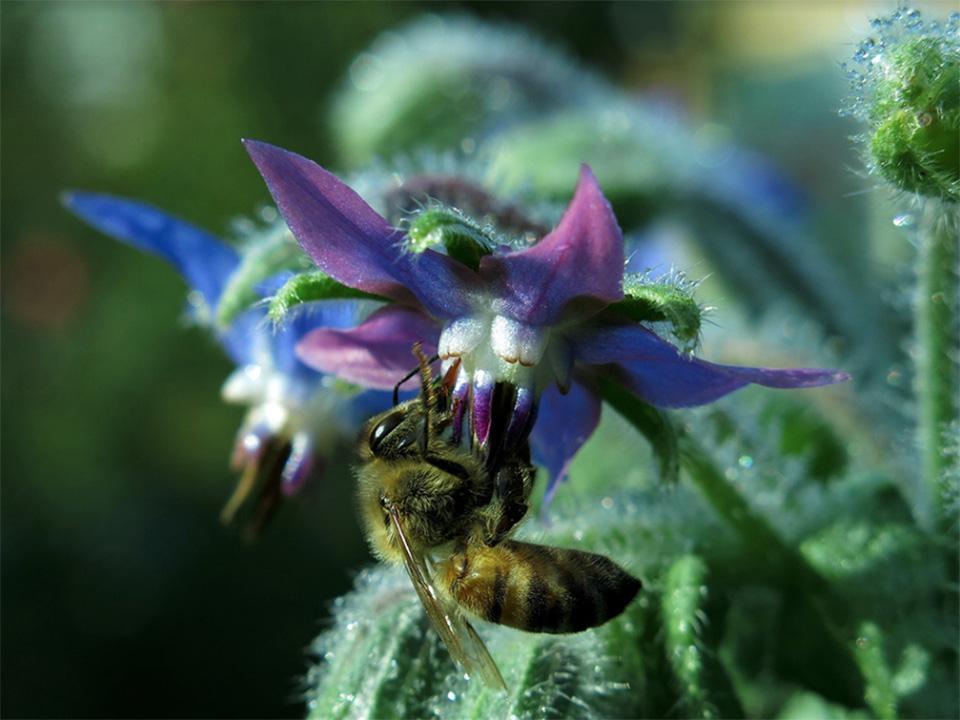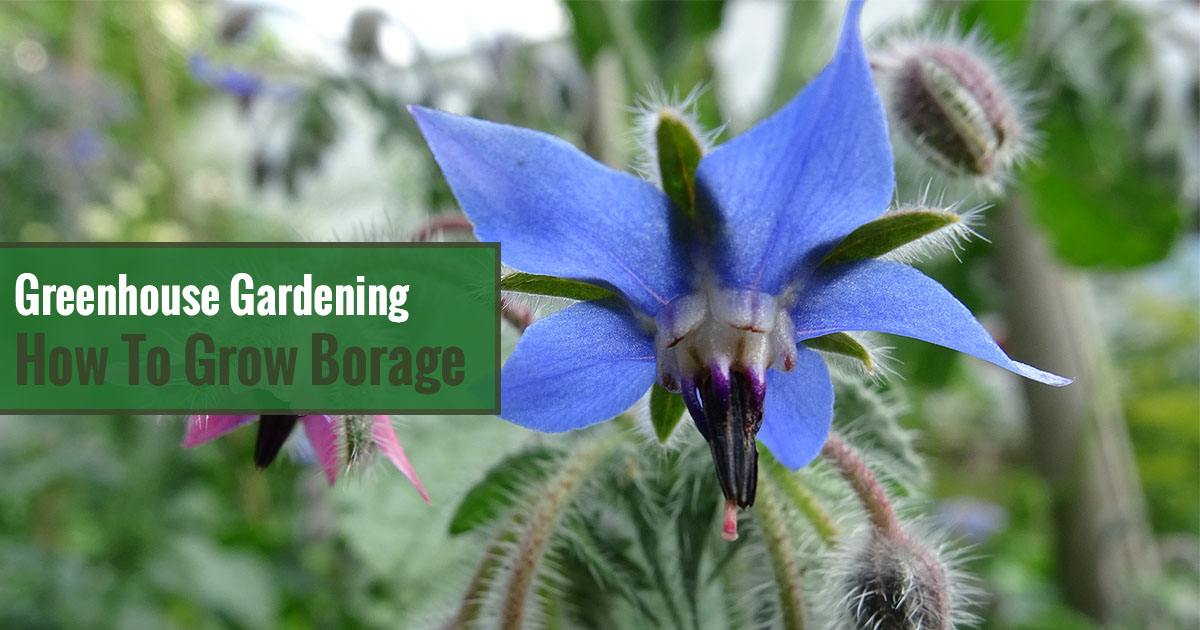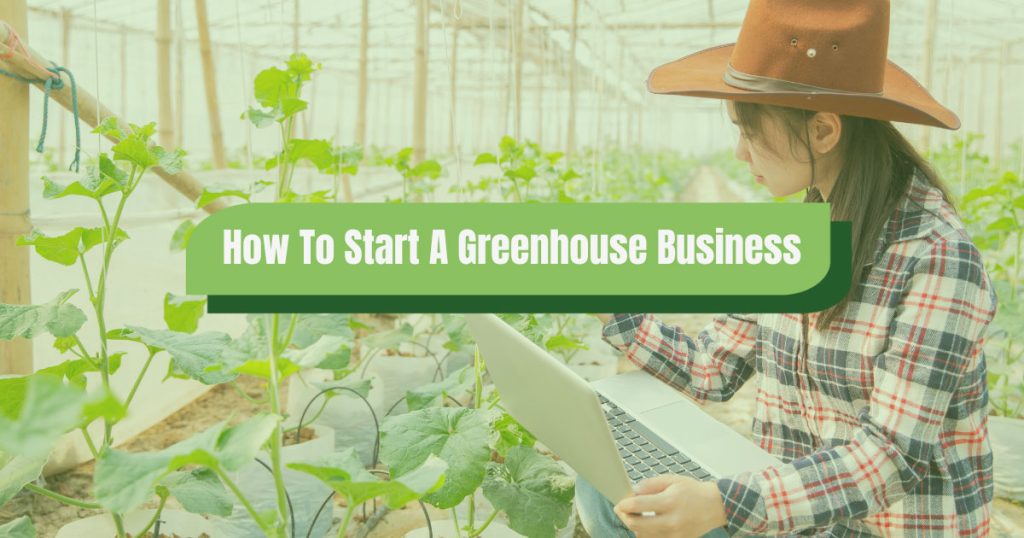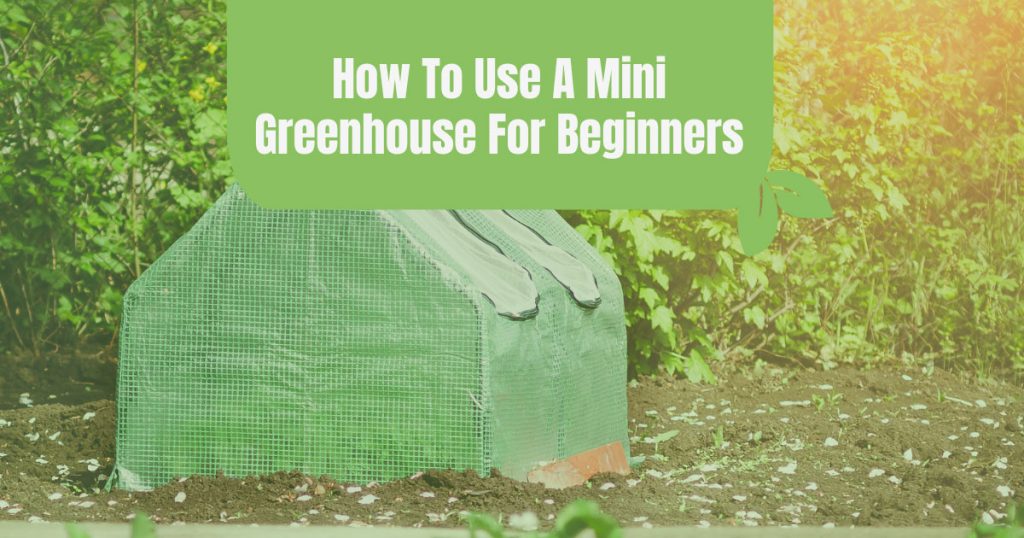
It is so easy to grow borage in your greenhouse all year round. It does not demand a great deal of attention. This blue star-shaped herb is also known as the Starflower. Its leaves and stems are covered with fine bristly hairs which can stand up to three feet tall. It develops well in containers and can be used as a companion plant with your squash and tomatoes. It abundantly self-seeds and blossoms most of the time. Just provide this hardy annual some space because it will branch out.
Borage is a great way to lure some honey or bumblebees into your greenhouse. Given that you have enough vents and doors to give them access and exit opportunities. Borage is also known as the bee bush or bee bread because they love borage flowers.

Borage uses
Borage flowers are oftentimes used to substitute candied violets for baked stuff. They have a refreshing, soothing cucumber taste that can be used to garnish salads, spreads, and casseroles. The flowers also make a perfect companion in cocktails and beverages.
Borage is loaded with calcium, potassium, and vitamin C. It is said to be powerful against weak adrenal function, fevers, colds, bronchitis, inflammation, chronic catarrh, congestion, and pleurisy.
Borage seed oil is applied for numerous skin ailments. Its oil is sometimes combined with infant formula milk in small amounts to provide fatty acids that are required to promote the maturation of preterm babies.
Let’s talk some borage history
Borage is basically indigenous to southern Europe and the Mediterranean. It has a rich and noble history as both therapeutic and herb of wisdom. It is once remembered as the “herb of courage”. The flowers were used to dress up the vestments of crusaders. A wine served from borage is told to bestow bravery and fearlessness upon the imbiber and was usually given to soldiers before joining a battle.
Growing this wonderful herb in a greenhouse can be easy if you follow these steps:
Quick overview of growing borage in a greenhouse
- Type: Warm-season crop
- Time from seed to harvest: 40-60 days
- Germination temp: 70°F
- Time until first emergence: 5-10 days
- Best temp to grow: 70-90°F
- Height: 18-30 in
- Spread: 12-36 in
- Grow from seed: 1/2 in deep; in groups of 3-4 spaced 15 in apart
- Companions: Basil, beans, cabbage, cucumbers, eggplant, melons, peas, peppers, pumpkins, radishes, strawberries, squash, and tomatoes
- Keep away from: Fennel, potatoes
How to grow borage in a greenhouse
- Plant the seeds in groups of three or four, about half an inch into the soil with a spacing of 15 inches between each group of seeds. Try planting borage in raised beds and check out these raised beds!
- Borage seeds normally germinate from 5-10 days after sowing.
- Two weeks after germination or when the seedlings attain a height of two inches, thin them to remain with a single plant in each hole and keep it upright and tidy.
Borage know-how
- The herb does not transplant well so always sow it where you want to grow it.
- Freeze borage flowers in ice cubes for an enjoyable way to chill your favorite summer beverages.
- Several vegetable crops that need pollination will gain from a nearby borage plant as borage blooms are bees’ favorite.
- They have high, hollow stems that can snap in heavy winds so overcrowding them to self-support is extremely advised.
Typical pests
Bugs and diseases are not really a difficulty for borage. It is hardy and rarely goes under due to attacks. It is one of the few problem-free flowers to plant. However, a caterpillar can be an occasional problem. Just pick them up, spray them off with a strong splash, or use an insecticidal detergent.
Watering needs
Borage excels in ground that is constantly wet. Water the plants frequently and mulch if you are located in a dry location to minimize water loss. Ideally, provide at least three inches of water weekly. Even though borage is drought-tolerant but once it is placed, young seedlings will require lots of water. Never let them dry out. Greenhouse watering systems allow your borage to get the required water they needed.

Preferred soil for borage
The plant thrives in almost all types of soil but the soil needs to be loose and well-aerated. Ideally, the soil should be rich, light and moist with pH ranging between 6.3 and 6.8. And the good news is that they can even tolerate ordinary soil. Do not feed them with too much nitrogen.
Best lighting and temperature
This herb grows well under the full sun but can tolerate a reasonable amount of shade. The best temperature to grow borage in a greenhouse is 70°F. Greenhouse kits that come with fluorescent plant grow lights are therefore ideal for growing. Check out which grow lights are best for your little borage.
Why borage is a great buddy for tomatoes, strawberries, squash, and cabbage
- It repels pests for cabbages and tomatoes but it attracts bees that can pollinate other plants in your greenhouse and scare caterpillars away.
- It adds trace minerals to the soil and enhances the taste of strawberries
- Due to its minerals and vitamins, it makes a great mulch for these plants.
- It can bloom for extended periods or multiple times if you take care of the welded flowers and if you prune it.
- Note: Borage also likes to grow big and wide. It may be a bully as well. So, make sure you keep it under control by planting it in pots or by thinning it.
Harvesting
Both the flowers and leaves of borage are safe to eat. You can harvest the flowers when they are fully open but still fresh while the leaves can be picked at any time and used while fresh. Its leaves carry a little quantity of silica. Some people are sensitive to this and it may cause irritation. Therefore, it is smart to wear gloves while picking the leaves.
Save the seeds!
Learning how to save seeds is so enjoyable because it is really easy and saves some money. Simply observe the flowers carefully and when they start to fade and become brown, it is time to pick the seeds. Make sure to catch them before they fall because borage is so good at seeding itself for the following season, even without your support.































